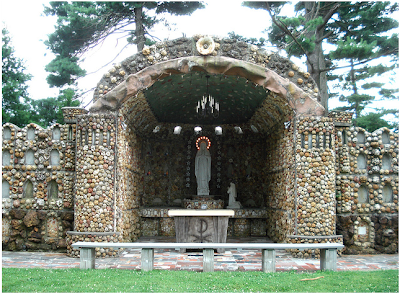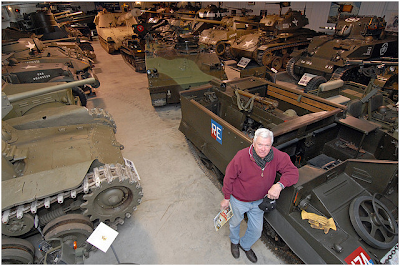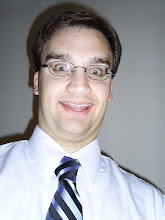Well, it’s finally that long-awaited time of year for me. I’m on vacation this week so as a result I’ll be taking a break from sharing and weird and interesting article from Wikipedia. It seems most of you subscribers live in Indiana so I lieu of that weekly article here are some random Indiana curiosities. While the following aren’t Indiana vacation destinations, they are certainly weird or interesting and worth checking out if you have the chance.
Medical history Museum - IndianapolisThe museum maintains a collection of scientific artifacts from the nineteenth and twentieth centuries in a completely authentic setting. Constructed in 1895 and inaugurated in 1896, the nineteen-room Pathological Department Building, as it was then called, is equipped with three clinical laboratories, a photography lab, teaching amphitheatre, autopsy room, and library. The most notable part of their collection is the room full of preserved human brains in jars. The brains come from patients suffering from various mental illnesses.
From:
http://www.imhm.org/Our Lady's Chapel in the Meadow - EdinburghThe chapel is located at camp Atterbury. The interior is painted with frescoes and is only the size of a small bedroom. Camp Atterbury was created in 1941 and was used to train US forces before being shipped to Europe during the war. The camp later served as a POW interment camp for 10,000 German and Itiallan POWS. Upon request, the POW’s were given permission on build a chapel on the grounds. Due to the shortages during the war, the prisoners could only use materials scrounged up in the immediate area. The chapel fell into disrepair in after the war, but was restored in 1987
From:
http://www.italianheritage.org/
The LST Ship Memorial (LST-325) - EvansvilleAn LTS (Landing Ship, Tank) is a is a ship that was designed to land on beaches. The flat bottom design allowed easy offloading of tanks and other armored vehicles. The LST-325 measures 300 feet long and is the It is the only remaining operational WWII LTS out of the original 1000. This particular LTS was part of the invasion on the beaches of Normandy. Later, it was donated to the Greek navy until a group of retired military men vied to have the ship returned to the US and relocated to Evansville. It now serves as a floating museum on the Ohio river.
From:
http://www.lstmemorial.org/
Crown Hill Cemetery - IndianapolisThe historic 555 acre Indianapolis cemetery is largest non-government cemetery in Indiana and the third largest in the United States. It is estimated that 82% of those who lived in Indianapolis prior to 1825, and who stayed here, are now buried at Crown Hill. Among those buried are many notable historic figures: John Dillinger, Charles Fairbanks, Benjamin Harrison, Caroline Harrison, Col. Eli Lilly, Thomas Marshall, James Whitcomb Riley, Booth Tarkington, and others. Daily tour are offered.
From:
http://www.crownhill.org/
The Blue Monkey Sideshow The Blue Monkey Sideshow is a Indianapolis-based traditional vaudeville sideshow with a modern edge and a humorous twist. Complete with authentic sideshow banners, live music, platform and sound. They feature contortion, knife throwing, juggling, sword swallowing, glass walking, and other sideshow favorites – all with a lovely and humorous presentation. I highly recommend checking out one of their shows when they are in town.
From:
http://www.bluemonkeysideshow.com/
Providence Health Care Center - JasperThe shrines on the grounds were constructed with tens of thousands of geodes from a small farm in Helton, IN. The construction was lead by Father Tad Sztucko in the 1960s and took almost a decade to complete. Father Thad wanted re-create the peaceful, spiritual setting of Loures. The care center was a home of the mentally handicapped at the time (these individuals were typically otherwise neglected by society). The entire project was made without blueprints, "just inspiration". On a side note, Father Thad participated in wedding me to my lovely wife.
From:
http://www.providencehome.org/
Shoe Tree - MilltownSince the early 1960's , people have been tossing old pairs of shoes into this tree. There is no agreement as to how the
tree started, but the collection of shoes has certainly grown over the years. The tree survived a lightning strike a few years back, although some of the shoes were melted to branches.
From:
http://www.roadsideamerica.com/tip/2679
The Blue Flash - BrucevilleBruceville,IN resident John Ivers built his own personal rollercoaster from scratch in his backyard in 2001. It’s 188 feet long, 20 feet tall, and is the world’s only self-built 360 degree corkscrew coaster in the world. "I'm not engineer educated," John said. "A lot of it was trial and error. I just thought one day, 'Man, a roller coaster coming down the side of that shed would be pretty neat." John said that the project was simply, "something fun in the backyard for the kids". And, yes, you can ride if you ask.
From:
http://www.roadsideamerica.com/story/29694
Ropkey Armor Museum - CrawfordsvilleFred Ropkey's museum created from his private collection is home to a multitide of military tanks, fighter planes, aterially boats, jeeps, combay boats, motorsycles, and cannons from WW1, WW2, Korean way, Vietnam was, and desert storm. He even has a shuttle module from a NASA space flight. All of his collection is in working order. He even leases parts of his collection out for movies. You may have seen some of his collection. Tn The Blues Brothers, Tank, The Siege, or Mars Attacks.
From:
http://www.ropkeyarmormuseum.com


















